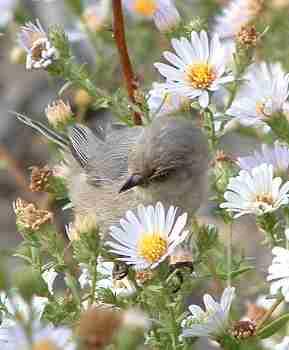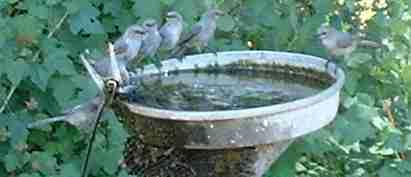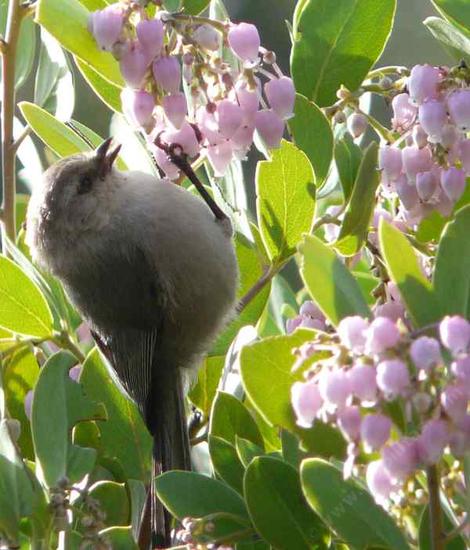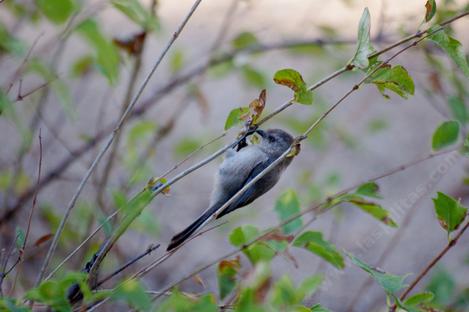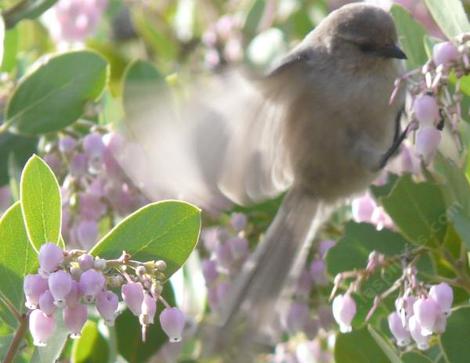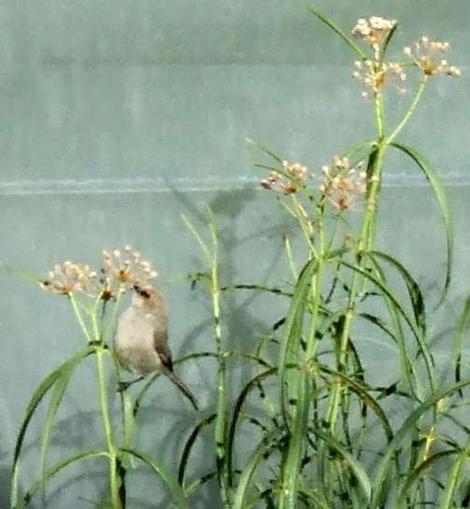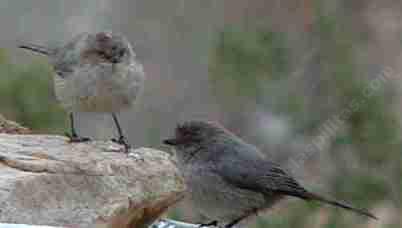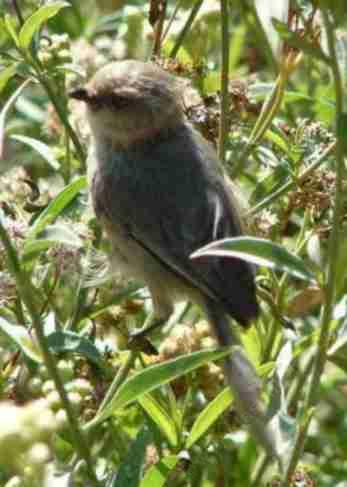Bushtit, Psaltriparus minimus
Range of the Bushtit
Bushtits are widespread throughout the state except desert habitats and the eastern side of the Sierra Nevada range. They do not enter high elevations on the western side of the Sierra Nevada. May enter desert habitats in fall and winter seasons.A flock of about 20 of these birds seem to always be in the Santa Margarita Nursery. Life is a party for them.
Reproduction of the Bushtit
Bushtits pair off in the spring and the mating pairs nest in hanging nest sacks made of spider webs and soft foliage. Usually in a dense tree like a coast live oak, Quercus agrifolia.Diet of the Bushtit
The Bushtit's diet consists mainly of insects and spiders gleaned from shrubs and herbs. These birds will help to reduce your insect pest population. They are quite acrobatic in their quest for insects, often hanging upside down. They seem to have no regard for gravity. No bug is safe from their probing little beaks. They have a peculiar movement pattern. Flocks generally move slowly in a sort of leap frog motion from one area of dense cover to the next. Only one or two birds move at a time.Migration of Bushtits
Flocks of Bushtits move upslope in the Sierra Nevada range after breeding. And move into desert riparian areas in fall and winter. We seem to have them all year at the Santa Margarita Nursery.How to attract Bushtits to your garden
Bushtits forage in large talkative groups. They also come to the bird bath together! A bird bath can be a great addition to a garden.
Bushtits like dense
undergrowth for cover as well as a source of insects and spiders.
Usually your garden shrubs are an excellent source of insects and
spiders. Here are two of their favorite native shrubs:
Mountain mahogany, Cercocarpus spp. provides excellent cover as well as foraging area. It makes a tall narrow hedge excellent for blocking out your neighbors.
California Juniper, Juniperus californica is also well liked by flocks of Bushtits.
Habitat/Plant Communities used by Bushtits
The bushtit prefers dense cover and an availability of insects. They may be found in a variety of brushy habitats.
Sagebrush scrub